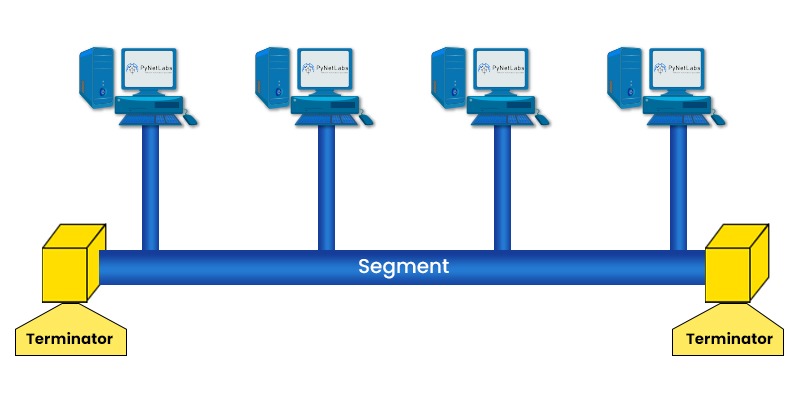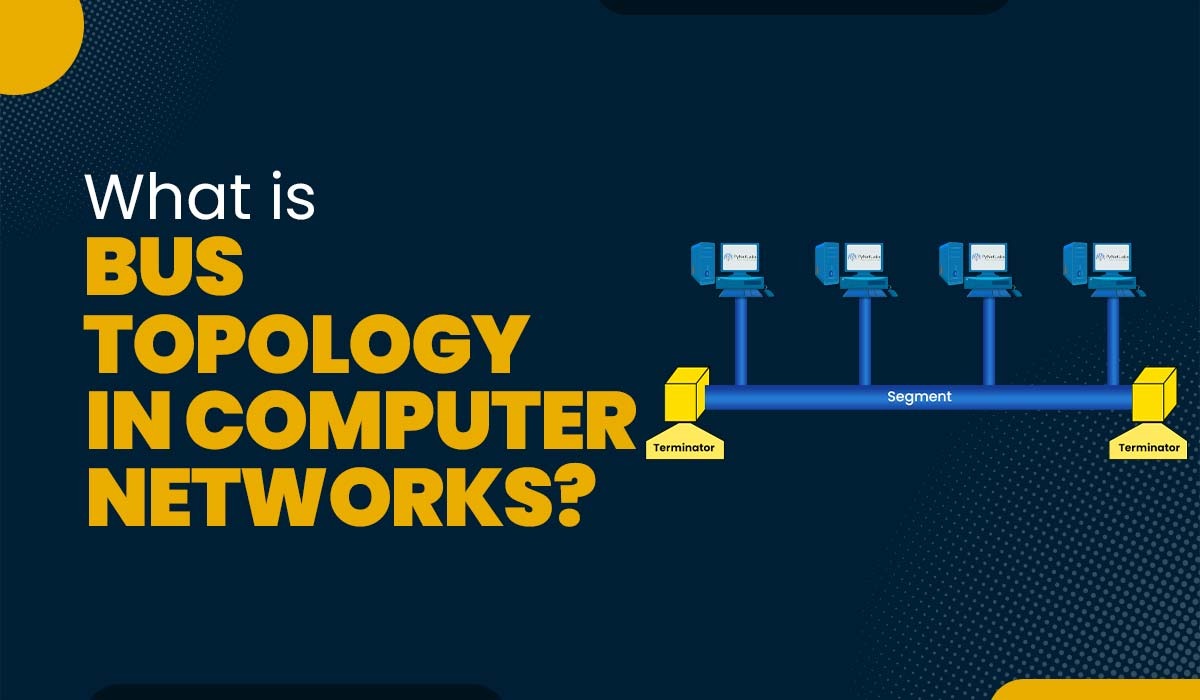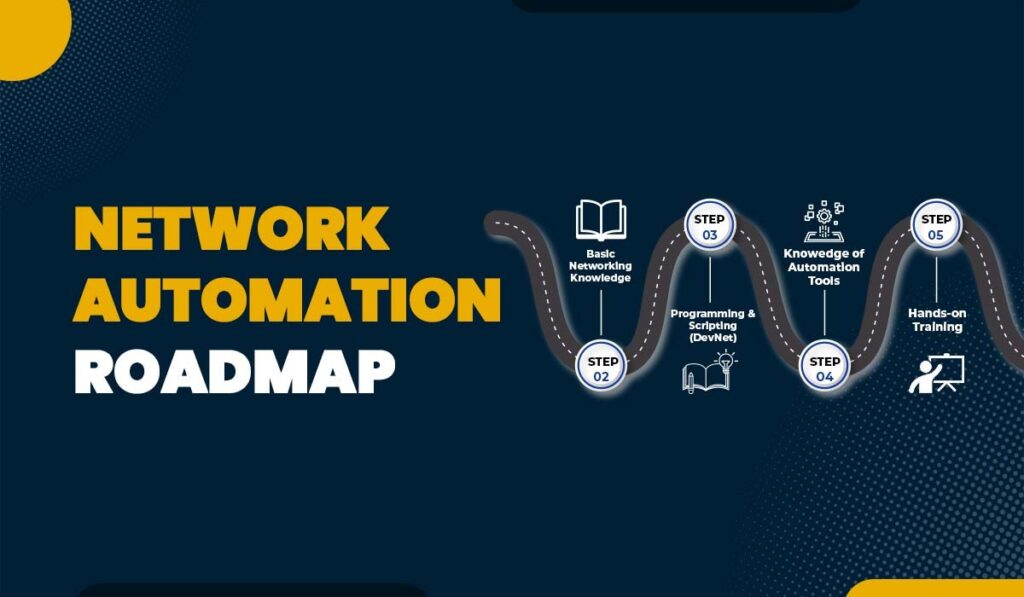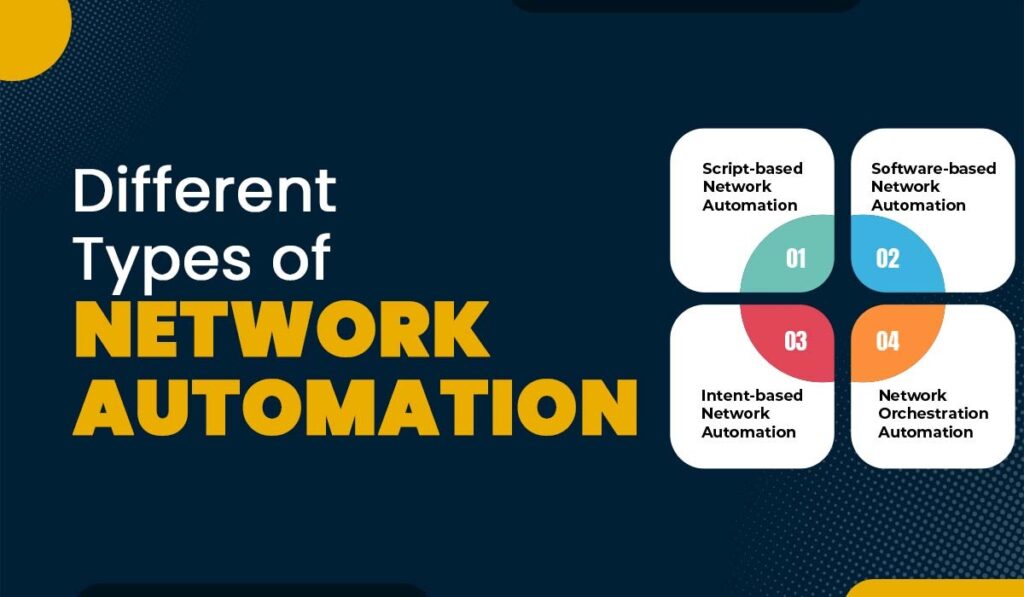Introduction
Computer networks play a vital role in allowing communication, data sharing, and resource utilization across devices. Within these networks, network topologies define how devices are interconnected. Various types of network topologies exist, such as point-to-point, mesh, star, ring, tree, and hybrid. Each topology has its own advantages and disadvantages. In this blog post, we will specifically focus on the bus topology – one of the oldest network topologies. We will look into its purpose and provide examples to explain its functioning principles while discussing both its advantages and disadvantages.
All these network topologies are very important for network engineers to connect their networks. That is why, these topologies are covered in the very beginning of your networking journey, i.e., CCNA Training. Let’s move on and understand what bus topology really is.
What is Bus Topology in Computer Networks?
Bus topology refers to a network arrangement where all devices are connected to a cable known as the “bus,” which serves as the medium for data transmission. Each device directly connects to the bus cable, forming a structure. Consequently, any data transmitted by one device becomes accessible to all devices that are part of the network.
To ensure transmission without signal interference or disruption, the bus cable incorporates two endpoints called “terminators.” These terminators prevent signals from bouncing back within the system.

Note: The bus is mainly a passive type of network. This means that it does not amplify signals. It simply transmits them across devices.
Now that we have a basic understanding of Bus topology. Let’s discuss its working.
How Does Bus Topology Work?
In a bus topology, data is sent as packets or frames along a coaxial or twisted-pair cable. These packets or frames contain a header with information like source and destination addresses as well as the type of data being transmitted. Below, we have explained its working in detail.
- Each device connected to the network has its address for identification purposes.
- When a device wants to send data to another device, it first checks if the bus is available or not, meaning it should be free.
- If the bus is free, the device sends the data packet along with its address and the destination address.
- If the bus is already in use, it patiently waits until it becomes available again.
- Upon receiving a data packet, a device checks whether the destination address matches its own address. If there’s a match, it then processes the data packet accordingly.
- Whereas, if there’s no match between the destination address and its own address, then it simply ignores the data packet and allows it to pass through without any action.
Purpose of Bus Topology in Networking
Bus topology is commonly employed in simple networks that have relatively low traffic and require minimal security. Below, we have discussed some of the purposes of using it.
- Connecting devices that are situated in proximity to each other.
- Providing a convenient networking solution.
- Reducing the cost and complexity associated with cabling.
- Allowing flexibility and scalability when adding or removing devices.
- It can also be used by small and medium-sized businesses which have limited resources.
- It is widely adopted by companies that can’t afford central equipment such as hubs or switches.
Let’s now look at some bus topology examples in networking.
Bus Topology Examples
One of the most common examples of bus topology in computer networks is Ethernet. When we talk about Ethernet, it is simply a standard protocol that defines how data is transmitted or received in a network. It makes use of coaxial or twisted pair cables to connect devices in a bus topology.
As we all know, every device has a unique MAC address that helps identify it on the network. When a device wants to send data to another device, it simply broadcasts the data by adding the destination MAC address on the bus. After that, all the devices that are part of the bus topology receive the data, but the one who has the associated MAC address accepts it.
Another example of bus topology is the CAN (Controller Area Network) bus used in vehicles. With the help of the CAN bus, various sensors, actuators, and controllers communicate without a central computer. Now, if we talk about how it works, it’s simple.
Each device has an identifier that assists in determining its priority on the network. In order to send data, the device first checks if the bus is free and then sends its identifier with the data. In cases where two devices try to transmit the data at the same time, the one with the highest priority wins.
We have explained some bus topology examples.
Data Transmission in Bus Topology
In a bus topology, data transmission takes place via a single communication channel. It resembles a bus that connects all devices in a linear sequence. The protocol used for data transmission in bus topology is CSMA/CD, i.e., Carrier Sense Multiple Access with Collision Detection.
But how does data transmission take place in Bus topology?
When a device wants to send data, it simply sends an electronic signal via the bus cable. This signal then travels from one end of the bus to the other, covering every single device along the way. Once the signal reaches each device, it checks the destination address, which is embedded in the signal, to check whether data is intended for a particular device or not.
If the address matches, the device accepts the data; otherwise, it ignores the signal and allows it to continue to the next device on the bus. This process continues until the signal reaches the intended device or reaches the end of the bus. At the end of the bus, there is a terminator that absorbs the signal to prevent in order to stop it from bouncing back and causing interference.
Applications of Bus Topology
Below, we have explained the different applications of Bus topology –
- Computer Networks: It is mainly used in small to medium-based computer networks where all devices are connected to a single cable. This makes it easy to set up and maintain.
- Industrial Control Systems: It can also be used in industrial settings. It is mainly used to control as well as monitor devices, machines, and sensors. This will ensure efficient production and, side-by-side, minimizing downtime.
- Telecommunications: Bus topology is highly used in telecommunications in order to connect multiple devices, such as switches, routers, and modems, to a shared communication medium.
- Medical Devices: Last but not least, bus topology is used in medical devices such as patient monitoring systems, medical imaging devices, and surgical robots. The idea behind using bus topology here is to ensure that there is efficient data transmission and analysis.
These are some applications of Bus Topology.
Characteristics of Bus Topology
Bus topology is one of the simple yet easy solutions. The characteristics that we are going to discuss will help in order to decide if it’s the right choice for your network needs or not. Let’s Understand!
- Easy to Install and Maintain: Bus topology is one of the easiest to set up as well as to maintain. Adding or removing devices is easy, which makes it a better option for small and medium-sized networks.
- Low-Cost: As we already know, bus topology makes use of a single cable. This makes it cost-effective, especially for small networks.
- Centralized Management: The single cable that acts as a backbone is easy to manage and also assists in troubleshooting the network with ease.
- Single Point of Failure: If the backbone fails, then the whole network will go down. Hence, it is known as a single point of failure.
- Not suitable for High-Traffic Networks: Bus Topology is usually not recommended for high-traffic networks. The reason behind it is the single point of failure.
Can Bus Topology be used with wireless networks?
YES! It is possible to use the same concept of traditional bus topology with wireless networks. With the help of special hardware, i.e., Wireless Access Point or WAP, we can use the bus topology with wireless networks. WAP acts as a bridge between the wireless and wired portions of the network. This way, a bus topology can be utilized with a wireless network using WAP and is an effective method where devices can exchange data and communicate effectively.
How does Bus Topology compare to other network topologies in terms of cost?
The cost of implementing bus topology is one of the lowest among all network topologies. It makes use of just one cable to connect all the devices in use and this helps to cut down the cost of cables and other supporting hardware. Maintenance as well as installation of a bus topology is also quite simple and does not demand a lot of money; consequently, it is cheap.
When we compare star and mesh topology with bus topology, it is cost-friendly since it uses fewer devices and cables. Bus topology However, as the network expands becomes less efficient and, hence, expensive to use.
Nonetheless, bus topology is advantageous for small networks especially due to easy-to-maintain and low-cost factors.
How do you troubleshoot Bus Topology issues?
To troubleshoot bus topology issues, one can follow these steps:
- Check the Cable: Look for damage, breaks, or loose connections in the cable.
- Check the Devices: Make sure all devices are turned on and connected properly.
- Check the Terminators: Ensure that terminators are installed at both ends of the cable.
- Check for Interference: Move the cable away from things that can cause interference, like fluorescent lights and microwaves.
- Check the Network Configuration: Make sure all devices are configured correctly.
- Use Network Diagnostic Tools: Use tools like ping, traceroute, and netstat to identify network problems.
- Isolate the Problem: Shut down all devices except one and see if the problem goes away. If it does, then the problem can be easily isolated.
Best Practice for Designing Bus Topology
Below, we have discussed some of the best practices for designing a bus topology:
- Use a Single, High-Quality Cable: Choose a good-quality cable that can efficiently transfer the data of your network.
- Minimize Interference: Stay as far away from interference devices such as fluorescent lights and microwaves, among other interference-causing gadgets.
- Avoid Over-Extension: Do not unroll the cable too long, as this reduces the cable’s efficiency and leads to loss of data.
- Use Terminators: Use terminators at both ends of the cable in order to prevent signal reflection and data loss.
- Regular Maintenance: Check on the cable frequently for signs of wear and test the network for problems frequently.
- Redundancy: Redundancy measures should be implemented, for example:
- Dual Cables: Use two cables, one as a primary and one as a backup, to ensure network availability in case of cable failure.
- Redundant Devices: Devices that should be connected with a bus topology should be connected by using many devices, for example, hubs or switches, in case one of them fails.
- Alternate Paths: Always have backup routes through which the data can pass in the event that one of the routes is obstructed or has a problem.
- Fault-Tolerant Design: Possible enhancements that can be incorporated in the design of Single-Fault Tolerant include:
- Error Detection and Correction: Make sure that you employ the error detection and correction algorithms that will help you to avoid errors in data.
- Automatic Switching: Use automatic switching devices to quickly switch to a backup system in case of failure.
- Monitor Network Performance: Keep a check on the utilization of the network and make the appropriate changes from time to time to meet its efficiency.
Now let’s discuss its advantages and disadvantages.
Advantages of Bus Topology in Networking
There are several advantages associated with using bus topology:
- It is known for being straightforward and hassle-free when it comes to installation and maintenance.
- Compared to many other topologies, bus topology requires less cable length and fewer devices. This ultimately leads to cost reduction and simplifies network management.
- The network allows for the addition or removal of devices without causing any disruption to any of the available devices in a network.
- It enables broadcast communication, where data from one device can be simultaneously sent to all devices.
Disadvantages of Bus Topology is Networking
Apart from the advantages that we just discussed, bus topology also has some disadvantages. These are:
- It has low performance and reliability. Here, the data transmission speed and quality depend on the length and condition of the bus cable.
- As we already know, all the devices that are part of this topology can access the transmitted data. Therefore, it has low security and privacy.
- It has a high collision probability; the reason behind it is multiple devices can try to send data at the same time, which in turn causes interference and data loss.
- Low fault tolerance, as any damage to the bus cable and the whole network will not work.
Frequently Asked Questions
Q1. What are 3 advantages of bus topology?
Three advantages of bus topology are:
- The addition and removal of devices in a bus topology is simple.
- Broadcast communication means one can send data to everyone at the same time.
- Less expensive simplifies network management.
Q2. What are the 5 network topologies?
There are different network topologies, each having some advantages and disadvantages. The five network topologies are:
- Bus Topology
- Mesh Topology
- Star Topology
- Ring Topology
- Tree Topology
Q3. What is bus ring and star topology?
- Bus topology uses a single cable to connect all devices,
- Ring topology forms a loop of cables between devices,
- Star topology connects each device to a central hub or switch.
Q4. What is an example of a bus network?
An example of a bus network is Ethernet.
Conclusion
Bus topology is simple and economical by which one can make devices to communicate in a computer network. In this blog, we have explained what it is, real-life examples for better understanding, its purpose, working along with its advantages and disadvantages.
Any suggestions or queries are most welcome. Please share it in the comment section below.





